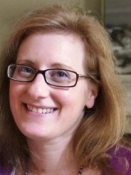Talking Heads
I was sitting at the back of the class while my student teacher was showing a clip from a documentary about the Belgian Congo on YouTube. A talking head in the documentary made a remark about not judging the severity of Belgian King Leopold’s actions in the Congo outside of the context of other harsh realities of 19th century imperialism. Essentially he said that Belgium shouldn’t be judged harshly because every imperial power was cruel. It occurred to me that this was the perfect starting point for a brief discussion of historical perspective, perhaps even the ethical dimension, especially since there were strong opposing voices at the time. Therefore it was the perfect opportunity to show students that first, judgements about history must be informed, and second, these judgements should also reflect dissenting opinions from the time.
Lesson
Not requiring a full lesson, I would let my students finish watching the section of the documentary. They would then be given a few written sources about the Belgian Congo: textbook, video, worksheet. Once they had learned the basics I would divide the students into small groups. Each group would be asked to discuss if the talking head had a fair point that was faithful to the historical thinking concept (HTC) of historical perspective, or if he was misusing historical perspective. As reference points the students already have packages that outline all the major guideposts and criteria for each HTC.
There would be no need for the group members to agree; the group is merely a forum for fleshing out ideas.
For reporting back, students would be released from their groups and be given the opportunity to express themselves via a spectrum; I divide the room up into a line ranging from 10 to 1. One end represents the viewpoint that the talking head is being fair, while the other extreme would say he is totally unfair. Students are allowed to choose any point along the spectrum. I usually have them stand during this process. I ask a few participants why they chose their current position (their justification) and then others respond, I prompt further thought, etc. After a few exchanges I ask students if anyone wants to change position. Sometimes students move spontaneously anyhow.
After doing this I would probably conduct a class discussion about the ethical dimension of 19th century imperialism. I’d want to do this as a full class since I’m less sure of my own view of ethical dimension; being part of the class discussion might help me develop my understanding of this HTC. Though I want students to be able to relate historical events to current events that are similar in nature, I am still learning how to enable them to do so without making uninformed rushes to judgement.
What I Would Do Differently
I haven’t tried this activity, of course, since my student teacher was teaching at the time the video was shown.
Adaptations
This activity is suitable for use with any documentary film. It can also be used with more biased written accounts. Textbook accounts tend to be too neutral.
If I wanted to formalize the activity and give it a written, assessable component, it would be possible to design an authentic scenario in which students would have to write to the producer of the documentary (or author of the book). Or if you wanted it to be more generic you could have students write an instructional manual for producers of historical documentaries to follow when dealing with issues of historical perspective. This might be suitable for grade 10s. The teacher could facilitate the students actually sending their letters via mail or email.


